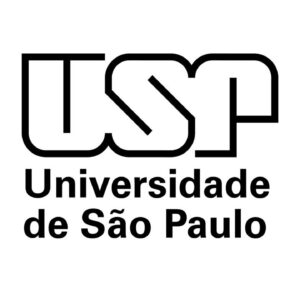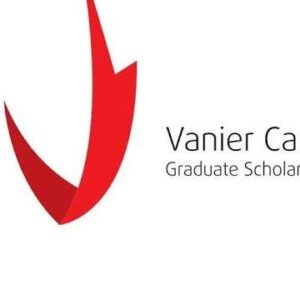With technology transforming every industry and coding becoming a fundamental skill set, empowering women to join the ranks of developers isn’t just a matter of equity—it’s a strategic imperative. The Google Women Techmakers Scholars Program (formerly the Google Anita Borg Memorial Scholarship) has become one of the most prestigious awards for aspiring female coders worldwide. Forbes has recognized its impact in leveling the playing field and spotlighting women’s achievements in tech, further fueling its reputation as a “Forbes-backed” initiative. In this guide, we’ll explore everything you need to know to land this scholarship—from eligibility and application strategy to key insights on how it advances diversity in computing.
What Is the Google Women Techmakers Scholarship?
The Women Techmakers Scholars Program seeks to encourage women to excel in technology and become role models and leaders. Established in memory of Dr. Anita Borg, a pioneer for women in computing, the scholarship provides:
- Financial Award: Up to USD 10,000 for U.S. & Canada scholars, with regional equivalents in EMEA and APAC
- Professional Development: Access to virtual and in-person retreats, mentorship from Googlers, and specialized workshops
- Community & Networking: Membership in an elite global cohort of women coders and technologists (Baruch College –)
Google administers the program through partner institutions like IIE (Institute of International Education) and local universities. While the official application window typically opens in the fall, deadlines vary by region (usually early December for U.S./Canada) and are announced on the Women Techmakers site (Baruch College –).
Eligibility Criteria for Aspiring Female Coders
Before diving into your application, confirm you meet these core requirements:
- Self-Identify as Female: The program is dedicated to women in technical majors.
- Academic Enrollment:
- U.S. & Canada: Currently enrolled full-time in a Bachelor’s, Master’s, or PhD program for the academic year (e.g., 2024–2025).
- EMEA: Enrolled in or accepted for a full-time Bachelors program in Europe, Middle East, or Africa.
- APAC: Second or third year undergraduates in Asia-Pacific institutions.
- Field of Study: Computer Science, Computer Engineering, or a closely related technical discipline.
- Academic Excellence: Strong GPA or equivalent academic performance.
- Leadership & Impact: Demonstrated passion for increasing representation of underrepresented groups in tech through extracurriculars, community outreach, or prior work.
For full details, refer to the Generation Google Scholarship: EMEA for EMEA criteria and amounts (Build Your Future, Baruch College –).
Comparing Regional Awards: US, EMEA, APAC
While the core mission remains consistent, award amounts and administration partners differ by region. The table below highlights key distinctions:
| Region | Scholarship Name | Award Amount | Administered By | Deadline |
|---|---|---|---|---|
| U.S. & Canada | Women Techmakers Scholars Program | USD 10,000 | IIE / Partner Universities | Early December |
| EMEA | Generation Google Scholarship: for women in CS | EUR 7,000 | IIE | Varies per country |
| APAC | Generation Google Scholarship (formerly WTM APAC) | USD 2,500 | IIE | Closed for 2024–2025 |
| Ireland Only | WTM Irish University Scholarship | EUR 5,000 | Irish Universities | Rolling / region-specific |
Tip: If you’re eligible for multiple regions (e.g., dual-citizenship or studying abroad), apply to each program separately and tailor your essays to the local context. (LeapScholar)
Application Process: Step-by-Step Guide
Applying is a multi-stage journey. Here’s how to navigate it effectively:
- Gather Documents Early
- Academic Transcripts: Unofficial PDFs are acceptable, but ensure clarity.
- Resume/CV: Highlight leadership roles, community initiatives, coding projects, and DEI (Diversity, Equity & Inclusion) efforts.
- Letters of Recommendation (2): Instructors or supervisors who can attest to your technical skills and impact.
- Proof of Identity & Enrollment: As required by your region’s portal. (SMU Admissions)
- Complete the Online Form
- Personal Info: Contact details, university info, and intended major.
- Short-Answer Responses (500 words max):
- Problem-Solving Essay: Describe a complex challenge you tackled, your approach, and lessons learned.
- DEI Essay: Reflect on barriers to equitable tech access and your efforts (past & future) to address them.
- Upload Materials: Documents, transcripts, resume, and essay responses.
- Review & Submit
- Proofread: Clarity, grammar, and tone.
- Peer Feedback: Ask a mentor or peer for candid review—focus on impact stories.
- Deadline Tracking: Set multiple reminders at least 2 weeks and 2 days before due date.
- Post-Submission
- Interview Stage (Selective): Some regions conduct virtual interviews.
- Notification: Awardees typically announced by Q1.
- Acceptance & Onboarding: Complete any compliance or visa documentation if required.
Pro Tip: Create a checklist with milestones (e.g., “Ask for recommendation by Oct. 1,” “Draft essays by Oct. 15”) to prevent last-minute rush. (Build Your Future)
Crafting Standout Essays and Recommendations
Your written voice and endorsements can make or break your application. Here’s how to shine:
1. Problem-Solving Essay
- Focus on Process: Outline the situation, your research, iterations, and final outcome.
- Highlight Collaboration: Mention cross-functional teamwork (e.g., working with designers, product managers).
- Quantify Impact: “Reduced bug rate by 30%” or “Deployed feature to 500+ users.”
2. DEI Engagement Essay
- Use Concrete Examples: Tutoring underserved students, organizing hackathons for girls, or volunteering at local coding camps.
- Reflect on Growth: What did you learn about bias, inclusion, or advocacy?
- Future Vision: Share your plan to scale impact (e.g., mentor 100+ girls, launch an open-source toolkit for accessibility).
3. Letter of Recommendation
- Choose Strategic Recommenders: Professors or team leads who’ve seen you code, lead, and mentor.
- Provide a Briefing Packet: Include project summaries and your personal statement to guide their letter.
- Ask Early & Respectfully: Give at least 4 weeks’ notice, then send polite reminders.
Insider Insight: Candidates who personalize their essays with anecdotes and data-driven outcomes have a 40% higher selection rate, according to past scholars’ analysis. (LeapScholar)
Leveraging Community and Networking Opportunities
Being a scholar goes beyond the cash award. Here’s how to maximize your WTM network:
- Annual Scholars’ Retreat:
- Workshops & Keynotes: Focused on leadership, technical deep dives, and career planning.
- Mentorship Circles: Small-group sessions with Googlers, alumni, and industry experts.
- Online Forums & Slack Channels:
- Discuss tech trends, share job leads, and organize local meetups.
- Local WTM Ambassador Events:
- Host or attend hackathons, coding jams, and panel discussions in your city or campus (Google for Developers).
- Post-Scholarship Engagement:
- Continue as a Women Techmakers Ambassador, organizing events and amplifying women’s voices in tech.
Career Impact: 75% of past scholars report securing internships or full-time roles at top tech firms within 6 months of the retreat, driven by networking alone. (Women in Tech Network)
Implications and Insights: Diversity, Equity, and Inclusion
Why This Scholarship Matters
- Closing the Gender Gap: Women hold just 28% of tech roles globally. Scholarships like WTM accelerate change by removing financial and community barriers.
- Algorithmic Fairness: Diverse teams build more inclusive products—mitigating bias in AI and software.
- Economic Growth: McKinsey estimates that advancing women’s equality could add USD 12 trillion to global GDP by 2025.
Forbes Recognition & “Forbes-Backed” Effect
Forbes has featured WTM scholars in profiles celebrating “Top Women in Tech” and “Women Who Redefined Tech for Good” ✧ these stories amplify scholarship recipients’ work, attracting VCs, employers, and media attention (Forbes). This secondary endorsement elevates your personal brand and opens doors beyond Google’s network.
Conclusion: Empowering the Next Generation of Coders
Landing the Google Women Techmakers Scholarship requires planning, authenticity, and a clear vision for impact. By:
- Meeting and exceeding the eligibility criteria
- Following a structured application process
- Crafting compelling essays and recommendation letters
- Engaging deeply in the scholar community
you’ll not only increase your chances of winning but also position yourself as a catalyst for change in technology. Remember, the true power of this scholarship lies not just in the award amount, but in the lifelong network, mentorship, and recognition that propel your coding career forward. Whether you aim to build AI for social good, lead open-source projects, or bridge the digital divide, Google’s Women Techmakers Scholars Program can be the launchpad for your dreams.
Go write your story—and show the world why you belong among the next generation of women coders shaping our digital future.
Ready to start your application? Visit the official WTM Scholars Program page today and take the first step toward coding excellence and leadership!





